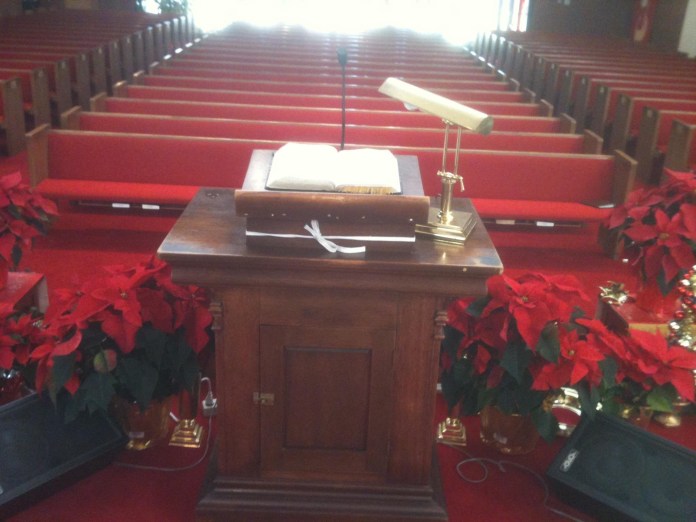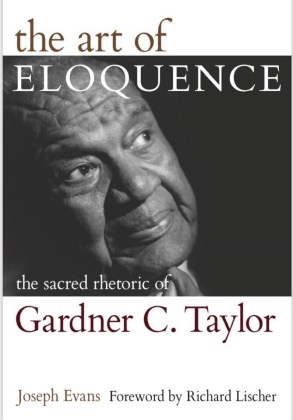By: Joseph Evans, Ph.D.
Something For Sunday
In 1994, Simon and Schuster published Doris Kearns Goodwin’s No Ordinary Time: Franklin and Eleanor: The Home Front in World War II. Goodwin frames then America of the 1930’s – 1940’s as a time that represented America’s new cultural paradigm shift. By this we mean the new American culture became a foreshadowing of the end of modernity (that is, the end of common symbols and universal values) and the birth of post-modernity (that is, a discovery of new symbols and multiples of developing values). World War II was a war that changed our cultural norms. We contend now that we are in a war (Coronavirus) and it will and has changed our cultural norms and values. Therefore we are tasked to grapple with how to interpret our culture, its symbols – even its secular and sacred texts.
In short, the Roosevelt years personify what we can call currently – no ordinary time. In recent days, the coronavirus signifies something similar. Once again, we face a – no ordinary time. As we share this writing, we are quarantined from daily activities that may cause many of us to reconsider how we live as a democratic society. During this time of community quarantine, should we all rethink quietly and personally what is happening? In fact, we who write, admit that we are living in our own – no ordinary time – and we ask if we are experiencing a part of the prophesied apocalypse? What will remain certain, most Christian church sanctuaries are empty on Easter morning.
Additional Knowledge: https://www.reelurbannews.com/the-invasion-of-locusts-coronavirus-and-the-apocalypse/

There are approximately 330 million American citizens and according to demographers, 70% of Americans or 231 million citizens comprise the American Christian traditions (In addition, there are approximately 6.4 million Jewish citizens in America or about 2.1% of the population and there are approximately 3.45 million American Muslims who make 1.1 percent of the American religious traditions). Of course there are other religious traditions in this nation that are not mentioned in this essay but we are aware respectfully of their enriching presence. We have focused our attention on a no ordinary time and how it affects empty sanctuaries that reflect the Christian observance – we call the Easter.
Let us hypothetically estimate that 20% of those Christian citizens had planned to attend Easter worship (The Ethiopian Orthodox Church and the Egyptian Coptic Church for example, will observe Easter worship on 19 April). This hypothetical means that 66 million Americans will not be able to attend public Easter worship. On Easter, we reemphasize that Christian houses of worship will be empty. Christians, what does this mean? Christian preachers, how do we interpret this no ordinary time? One place that we may look is chapter 15 of the book of Revelation. We remind readers that the book of Revelation is filled with word similes and metaphoric language.
John the Revelator is believed to be the Revelation’s author. He is an eyewitness who sees the heavenly scene that occurred (or occurs continuously) around the throne of God. This is a worship service and a victory celebration of God over God’s enemies. The heavenly scene appears to be a continuous rehearsed recital of an extravagant pageant dedicated to the holiness of God alone. Each aspect of this scene is meticulous and filled with incredible characters that underscore the person, power and presence of God. John the Revelator has been given privilege to eavesdrop on the heavenly court and it is his responsibility to accurately report this scene to his audience. Because of his privilege, we are permitted to vicariously eavesdrop on that which John witnesses.
In order to grasp this scene, we have decided to compare “apples with apples” and “oranges with oranges.” In short, we make an attempt to create groupings of figures that appear in this scene.
We believe this simplifies its composition for reader comprehension. We have chosen then to group particular verses that make the scene easier to grasp for our readers. We refer to other biblical texts carefully and judiciously outside Revelation 15. Our hope is that our external references are employed to reinforce and make clear and plain the heavenly scene that is located in Revelation chapter 15. We do not claim that we are in possession of ex-cathedral interpretation; we claim that we are interpreters only. Let us begin with groupings that are similar; groupings located in Revelation 15: 1, 6- 7.
In chapter 15:1, John witnesses another great and amazing sign (we believe that John witnessed seven signs or seven miracles) in heaven. This seventh sign or miracle is associated with seven angels and seven plagues. In chapter 15:6, the seven angels with seven plagues and seven golden bowls reappear. In chapter 15:7, we now add; one of the four-living creatures appears. The creature serves as a bursar (see also Revelation 4:6-8). The creature has the privileged responsibility to disburse to the seven angels, the seven golden bowls of plagues.
In chapter 15:2, we take notice of John’s description of the sea of glass mingled with fire (sea, glass, and fire), and those who conquered the beast and its image. These conquerors are adorned with the number of its name (we believe the number refers to the Lamb of God’s name (see Revelation 4: 6-8; 5:11-14 and Revelation 14:1). In addition, these who are conquerors have “harps of God in their hands and they sing the songs of Moses the servant of God, and the song of the Lamb” (vv. 2-3):
Great and amazing are your deeds, O Lord God Almighty! Just and true are your ways, O King of the nation’s [people groups from every nation in the world]! Who will not fear [that is, reverence you], O Lord, and glorify your name? For you alone are holy. All nations will come and worship you, for your righteous acts have been revealed (vv. 3-4 and see also Exodus 15:1-18)!
As previously mentioned, John witnessed what he describes as a sea of glass mingled with fire (see Chapter 4:6 and 15:2). The sea, glass and fire are an image that defies human logic. Human words therefore, are inadequate and are merely symbols that we attach to describe something else; something that is real but here our words fail to describe what is clearly witnessed through previous prophetic writings (See Exodus 24:10; Ezekiel 1:22,26). We suggest strongly, however, the sea of glass mingled with fire is located approximate to the throne of God. Thereby his words are intended to be a metaphor. The extended metaphor signs perhaps, the holiness of God; the purity of God; and the perfection of God. Also near God’s throne location are “those who conquered the beast and its image and the number of its name, standing beside the sea of glass” (Revelation 15:2). Who are these people? Who is the beast? What is the number of its name?
We believe that the people are those who represent the 144,000 (Revelation 14:1) and those described are the redeemed and sealed or the elect of God in Revelation 7:1-6 and afterward “a great multitude that no one could number from every nation, from all tribes and peoples and languages, standing before the throne and before the lamb clothed in white robes, with palm branches in their hands” (Revelation 7:9). Let us recognize that John makes a distinction. He first points to an exact number perhaps believers; we can locate in the Hebrew Bible. The second number is infinite and we suggest these are New Testament or Christian believers. We add that approximate to the God’s throne are “Twenty-four elders, clothed in white garments, with golden crowns on their heads” (Revelation 4:4). These persons may have been a number that exacted the twelve tribes of Israel and the twelve Apostles that appear in New Testament texts.
As indicated earlier, there is a beast and its image that are witnessed in Revelation 15:2. We take notice that there are two beasts that appear in Revelation chapter 13. In Revelation 15:2, we suggest strongly that John the Revelator points toward namely; the second beast (Revelation 13: 11-18). We point to this narrow part of Revelation 13, because it closely describes the second beast and its image as the beast and image of Revelation 15:2. What follows is that second beast and image located in Revelation 13: 15-18:
And it was allowed [John refers to the second beast] to give breath to the image of the beast so that the image of the beast might even speak and might cause those who would not worship the image of the beast to be slain. Also, it causes small and great, both rich and poor both free and slave to be marked on the right hand or the forehead [a type of tattoo], so that no one can buy or sell unless he [or she] has the mark, that is, the name of the beast or the number of its name. This calls for wisdom: let the one who has understanding calculate the number of the beast, for it is the number of a man, and his number is 666.
These characters frame this graphic imagery and mysterious boundaries of this heavenly scene. For most of us, a sure interpretation of this text is difficult to provide to readers. However, our recital of the text does present for readers a dramatic view of the sights, sounds, and smells of heaven. We remind readers that Revelation chapter 15 is nothing less than a continuous rehearsed recital of an extravagant pageant dedicated to God alone. We can trust our interpretation leads readers to appreciate that forthcoming to all believers the existence of authentic heavenly worship of God and a victory celebration of God’s defeat over God’s enemies.
There is this final part of this scene of heaven that attracts our attention; and may be a part of an explanation for the reason that we have empty houses of worship on 2020’s Easter Sundays (Revelation 15: 5-8). John the Revelator reports that after he witnessed a part of the heavenly choir sing the songs of Moses and the Song of the Lamb, the true sanctuary of God appears before him (see also Revelation 4:1-11 and read about a similar apparition):
After this I looked, and the sanctuary of the tent of witness in heaven was opened, and out of the sanctuary came the seven angels with seven plagues, clothed in pure, bright linen, with golden sashes around their chests. And one of four living creatures gave the seven angels seven golden bowls full of the wrath of God,[it is God] who lives forever and forever, and the sanctuary was filled with smoke from the glory of God and from his power, and no one could enter the sanctuary until the seven plagues of the seven angels were finished.
We cannot go beyond this. We can only reemphasize what John the Revelator reportedly witnessed. It appears that the true sanctuary was made visible to him but after the choir sang heaven’s anthems. It was then that he sees the seven angels, the seven golden bowls filled with wrath and one of the four living creatures who gave the bowls to the angels. He bears witness that the angels were adorned in pure bright linen and golden sashes around their chests. And there was God, who lives eternally and there was smoke, the metaphoric symbol of God’s person, presence and power in the tent of witness.


There are approximately 231 million people who affiliate with Christian traditions in America. If 20% had planned to attend a public Easter worship service, we are told not to do so. Our church sanctuaries are empty on Easter morning. We can point toward the Coronavirus punditry as the culprit. Indeed it may be. Christians however; what does this mean? What does Revelation chapter 15 mean? Christian preachers how do we grapple with its content and claims? We offer this, Christian preachers, we proclaim the biblical witness. As Christians, we must believe the biblical witness. As people of faith, we wait upon the Lord to make plain to us the word of God. Our church sanctuaries are empty on Easter Sundays, but Easter still comes in heaven.
Cover Photo: First Baptist Church, Huntington, West Virginia. Photo Credit: Dr. Joseph Evans/Reel Urban Images

Dr. Evans is the author of “Reconciliation And Reparation Preaching Economic Justice.
Dr. Evans contributes ecumenical and social perspective to ReelUrbanNews.com.

We Publish News 24/7. Don’t Miss A Story. Click HERE to SUBSCRIBE to Our Newsletter Now!






